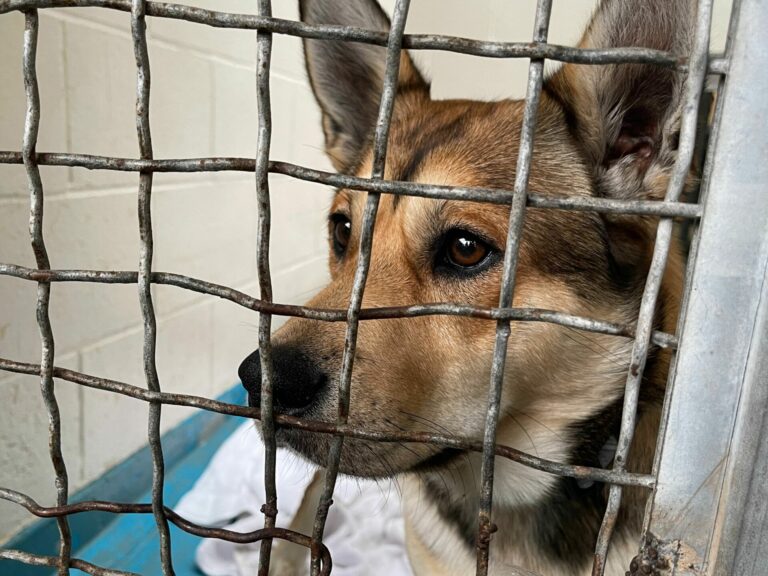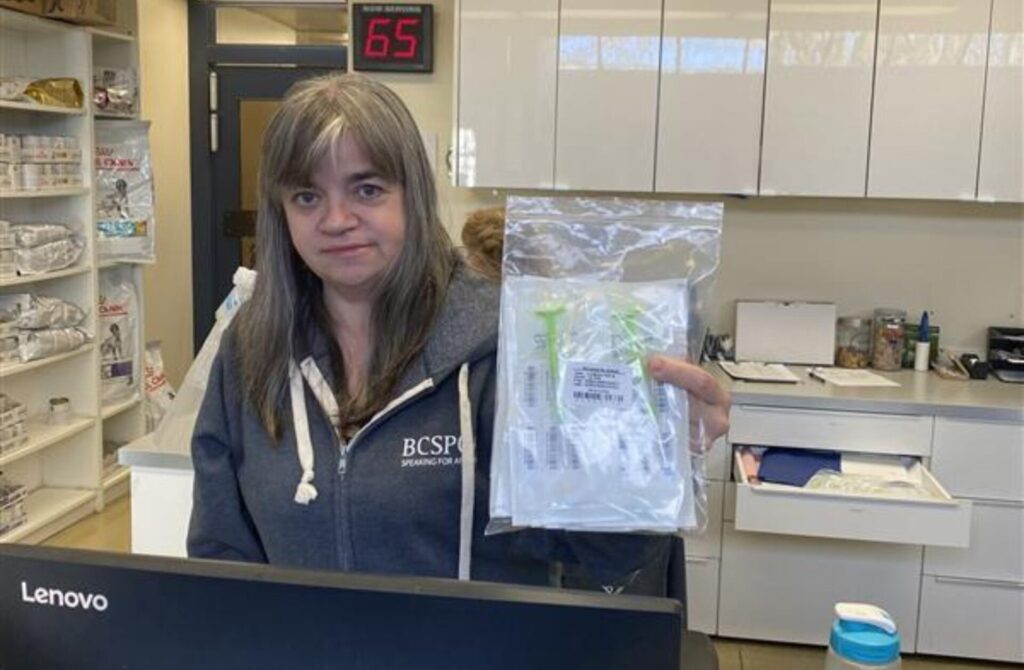Losing a pet is one of the most stressful experiences a pet owner can face. The uncertainty, fear, and endless searching can be overwhelming. But what actually happens when a lost pet is found and taken to a shelter? Many pet owners assume that the process is simple—scan for a microchip, call the owner, and reunite them immediately. However, the reality is more complex.
Understanding how shelters handle lost pets, how microchips play a role in identification, and why BC Pet Registry is a vital resource can help pet owners take the right steps to ensure their pets return home safely and quickly.
Table of Contents
The First 24 Hours: What Happens When a Lost Pet Arrives at a Shelter?

When a lost pet is brought to a shelter, trained staff follow a structured process to identify the animal and locate the owner. Here’s what happens step by step:
Health and Safety Check
The first priority is to ensure the pet is safe and healthy. Shelter staff will:
- Examine the pet for visible injuries, illness, or signs of neglect.
- Provide any necessary medical attention if the pet is sick or injured.
- Assess the pet’s behavior to determine stress levels and immediate needs.
Checking for External Identification
If the pet is wearing a collar and ID tag, the staff will attempt to contact the owner using the provided details. However, many lost pets arrive at shelters without any visible identification, making microchipping a critical next step.
Scanning for a Microchip
Shelters use universal microchip scanners to detect and read an implanted microchip. Once a microchip number is found, staff will enter it into a national pet registry database, such as BC Pet Registry, to retrieve the owner’s contact details.
Challenges with Unregistered Microchips
A microchip is only useful if it is registered and linked to up-to-date contact information. If a pet’s microchip is:
- Unregistered, the shelter has no way to track the owner.
- Registered with outdated details, contacting the owner may be impossible.

This is why keeping your pet’s microchip registration updated is essential. Without it, a pet could remain in a shelter for days or weeks despite having a microchip.
💡 Tip: Always keep your contact information current. Check or update your pet’s microchip registration with BC Pet Registry.
The Mandatory Holding Period
Shelters are required to keep lost pets for a designated period before considering them for adoption or rescue placement. This holding period typically ranges from 3 to 7 days, depending on local laws.
During this time, shelters continue efforts to locate the owner, but if no contact is made, the pet may be put up for adoption, transferred to a rescue, or placed in long-term care.
What Can Pet Owners Do to Ensure a Faster Reunion?

While shelters do everything they can to reunite lost pets with their families, pet owners also have a responsibility to make sure their pets can be identified easily. Here are three key steps to improve the chances of a fast reunion:
- Microchip Your Pet and Register It – A microchip only works if it is registered with a trusted database like the BC Pet Registry.
- Keep Contact Information Up to Date – If you move or change phone numbers, update your pet’s microchip registration immediately.
- Use Additional Forms of ID – While microchips are essential, adding a collar and ID tag can provide an extra layer of security.
Taking these precautions significantly increases the likelihood of your pet returning home safely if they ever get lost.
What Happens If No Owner is Found?
If a pet has no microchip, or if the contact information linked to their microchip is outdated, the shelter will take additional steps to try and reunite the pet with their owner. These may include:
- Checking Lost Pet Reports – Shelters compare found pets with local lost pet reports from owners.
- Posting Online Notices – Many shelters upload photos and details of found pets on their website or social media.
- Connecting with Rescue Groups – If a pet is not claimed, it may be transferred to a rescue for rehoming.
Real Story: How BC Pet Registry Helped Reunite Hobbes with Her Family
Hobbes, a beloved cat, went missing from her home and was lost for months. His owner searched tirelessly, posting flyers, contacting local shelters, and checking online lost pet groups. But just when hope seemed lost, Hobbes was found—150 kilometers away from home.
Thanks to his registered microchip, the shelter that took his in was able to scan his and retrieve his owner’s up-to-date contact information through BC Pet Registry. Within hours, Hobbes was on his way home.
Without a registered microchip, he might never have made it back to his family.
Be a Part of the 80% Responsible Owners
During our recent events, we scanned hundreds of pets, all with microchips implanted. Only to discover that approximately 20% of the pets’ microchips are not linked to any registries in North America. We recommend all pet owners to double check their pet’s registration and directly registering with us. All you need is the microchip number and/or tattoo code to start the online registration process. For a small, one-time fee of $45, your pet will be protected for a lifetime and you will also have contributed to the life-saving work of the BC SPCA.
Real Story: How BC Pet Registry Helped Reunite Hobbes with Her Family

Hobbes, a beloved cat, went missing from her home and was lost for months. His owner searched tirelessly, posting flyers, contacting local shelters, and checking online lost pet groups. But just when hope seemed lost, Hobbes was found—150 kilometers away from home.
Thanks to his registered microchip, the shelter that took his in was able to scan his and retrieve his owner’s up-to-date contact information through BC Pet Registry. Within hours, Hobbes was on his way home.
Without a registered microchip, he might never have made it back to his family.
Steps to Take If Your Pet Goes Missing
If your pet goes missing, taking immediate action can significantly increase the chances of a safe return. Here’s what to do:
- Update Your Pet’s Status in BC Pet Registry – Mark your pet as lost so shelters scanning their microchip know to contact you.
- Search Nearby Areas – Pets often stay close to home. Check familiar spots, call their name, and ask neighbors.
- Contact Local Shelters and Vet Clinics – Provide them with a detailed description and check if your pet has been brought in.
- Post on Social Media and Lost Pet Websites – Use Facebook groups, Nextdoor, and local pet recovery networks.
- Check Shelters in Person – Many shelters require owners to visit in person to identify their pet.
Why BC Pet Registry is the Best Choice for Pet Owners
BC Pet Registry is Canada’s most trusted non-profit pet identification database, operated by the BC SPCA. Here’s why pet owners rely on it:
- Nationwide and International Recognition – BC Pet Registry partners with SPCAs, veterinarians, and shelters across Canada and is linked to the AAHA Universal Pet Microchip Lookup Tool for global traceability.
- 24/7 Access to Contact Updates – Pet owners can update their contact details anytime to keep records accurate.
- Trusted by Animal Welfare Experts – As a non-profit registry, all registration fees support animal welfare programs.
FAQ
Q: How do I know if my pet’s microchip is registered?
Please reach out to the BC Pet Registry at info@bcpetregistry.ca if you have questions regarding your pet’s microchip status or by logging into your BC Pet Registry account.
Q: How long do shelters keep lost pets?
Shelters typically hold lost pets for 3 to 7 days before they become eligible for adoption.
Q: Should I use a collar and ID tag even if my pet is microchipped?
Yes! Collars and ID tags allow anyone who finds your pet to contact you immediately.
Q: Is microchipping painful for pets?
No, microchipping is a quick and minimally invasive procedure, similar to a routine vaccination.

